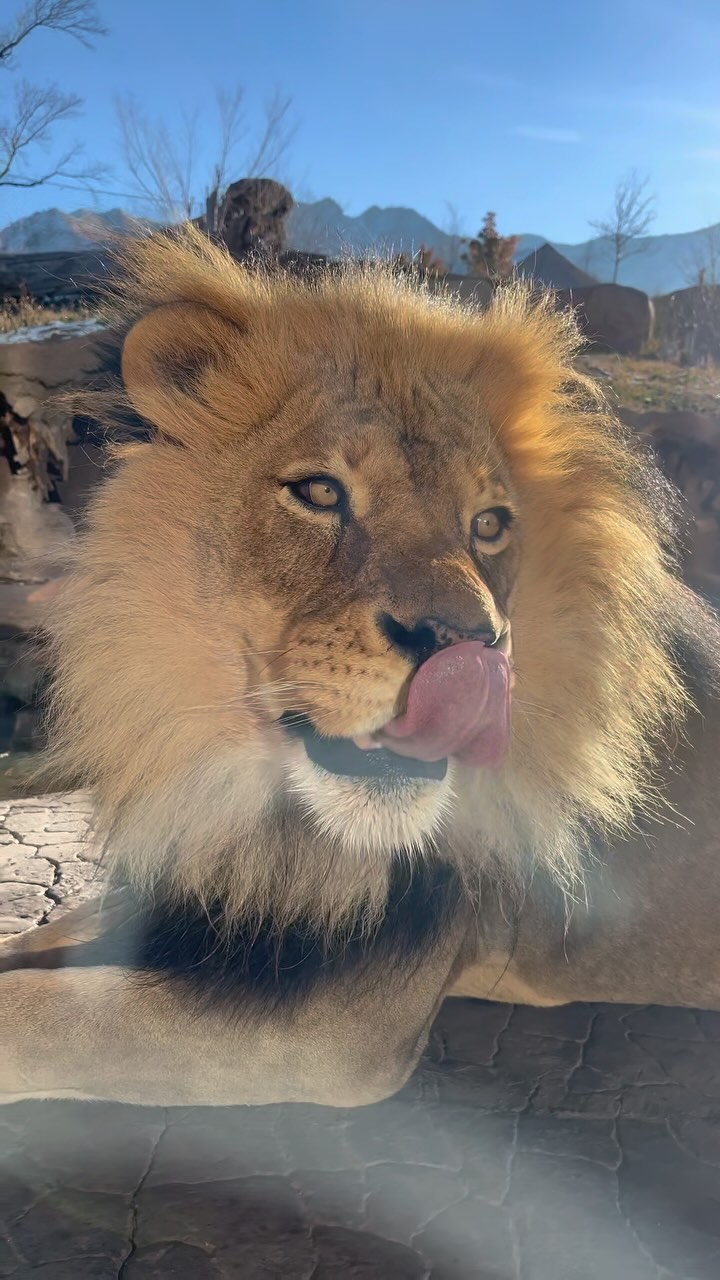– Discover how the lion’s seemingly simple tongue is a masterpiece of evolutionary design.
– Step into the hidden world of animals’ unique adaptations that blend survival with an unexpected dash of flair.
– Explore the intricate dance between predators and prey, a performance perfected over millennia.
– Unearth the secret lives of creatures often overlooked, where each has a story woven into the larger tapestry of life.
The natural world is replete with tales of survival, predation, and, sometimes, just a hint of panache. Each creature on our planet comes with a toolkit finely honed by the forces of natural selection, yet some adaptations catch the eye with a style that could easily inspire a runway.
**The Lion’s Tongue: Nature’s Gritty Comb and Cutlery**
Let us start with the king of the beasts, the lion. At first glance, the lion’s broad and muscular form is the epitome of strength. What many overlook is the extraordinarily barbed tool that lies within their mouths. The tongue of a lion is not merely for tasting or vocalizing; it is an organ of survival. The papillae that pepper the lion’s tongue play a crucial role in their grooming habits, allowing them to keep their fur free of dirt and parasites. But these tiny, backward-curving spines are even more vital during mealtimes. As they feed, the tongue’s rough surface acts like a tenderizer, separating meat from the bone with its rough surface-purpose structure, demonstrating nature’s penchant for elegant solutions to life’s many demands.
**The Artistry of Survival**
As we delve deeper into the animal kingdom, survival often comes with an unexpected aesthetic element. Take the peacock spider, for instance, which combines a predator’s ruthless efficiency with a Broadway star’s flamboyance. The peacock spider’s mating dance is a kaleidoscope of vibrant colors and movements. These tiny arachnids are not just about the sizzle; their elaborate displays are crucial for attracting mates and ensuring their genetic lineage.
**The Ingenious Techniques of Predators and Prey**
The ceaseless dance between hunter and hunted has led to many impressive adaptations. The mantis shrimp, for example, packs a punch that is both deadly and dazzling. With club-like appendages that strike with the speed of a bullet, they shatter the shells of their prey. But their eyes are the true marvel; with a visual spectrum far beyond our own, they can detect polarized light and see the world in a way we can hardly imagine.
Conversely, prey species like the cuttlefish have developed their means of evasion. These cephalopods can change color and texture with such finesse that they effectively become invisible against their backdrop while maintaining an appearance that designers might envy.
**The Unseen World of the Small and Mighty**
In the underbrush and the soil, smaller creatures forge their existence in ways that are no less fascinating. Consider the industrious leafcutter ant, each one only a few millimeters in size, yet part of a colony that is a marvel of biological architecture. These ants cut through leaves not to eat them but to grow their food in the form of a specialized fungus, combining agriculture and construction in one fell swoop.
**The Symbiosis of Style and Substance**
We often miss the inherent artistry present in nature’s functional designs. The delicate latticework of a spider’s web, the symmetry of a snowflake, or the aerodynamic form of a falcon in dive are a testament to the inherent fusion of form and function. What is even more extraordinary is how these designs contribute to the success of their bearers, crafting a world where beauty and practicality are inextricably linked.
As we explore deeper into the workings of the world’s ecosystems, it becomes apparent that what might appear as sheer extravagance is often a vital component of an organism’s toolkit for survival. Take, for instance, the extravagant plumes of a bird of paradise. While their primary role is attraction and courtship, researchers have discovered that their vibrant feathers also possess structural forms that manipulate light to produce iridescence, enhancing their allure.
**The Imperative of Conservation**
In marveling at these wonders, we’re reminded of the critical need to protect and conserve the diversity of life around us. The dances, displays, and designs that captivate us also rely on the delicate balance of ecosystem health. By fostering a sense of stewardship and reverence for nature, we support these species’ survival and the continuation of the natural world’s enchanting artistry.
**Conclusion: A Celebration of Nature’s Splendor**
What does a lion’s gritty tongue, the peacock spider’s courtship jig, and the mantis shrimp’s colorful vision tell us? They speak of a world where the line between necessity and extravagance is blurred, where a creature’s ability to persist is sometimes matched by its ability to astonish. It is a world where the most minute detail or grandest display is not just about survival but a testament to the sheer inventiveness of life.
This interconnected web of life, resplendent with flamboyant and discreet creatures, is an endless source of fascination. It urges us to look beyond the surface and appreciate the complexities, the strategies, and the elemental style woven into the fabric of the natural world. So the next time you behold the wonders of nature, remember that behind each marvel lies a story of resilience, triumph, and, fundamentally, a stroke of living art.
*****
Source Description
Vulcan’s bringing some ✨style✨ to this 😋
Did you know a lion’s tongue is armed with tiny backward-curving spines called papillae? Serving a dual purpose, papillae help lions groom themselves (watch until the end to see!) and help them get meat off of bones.

